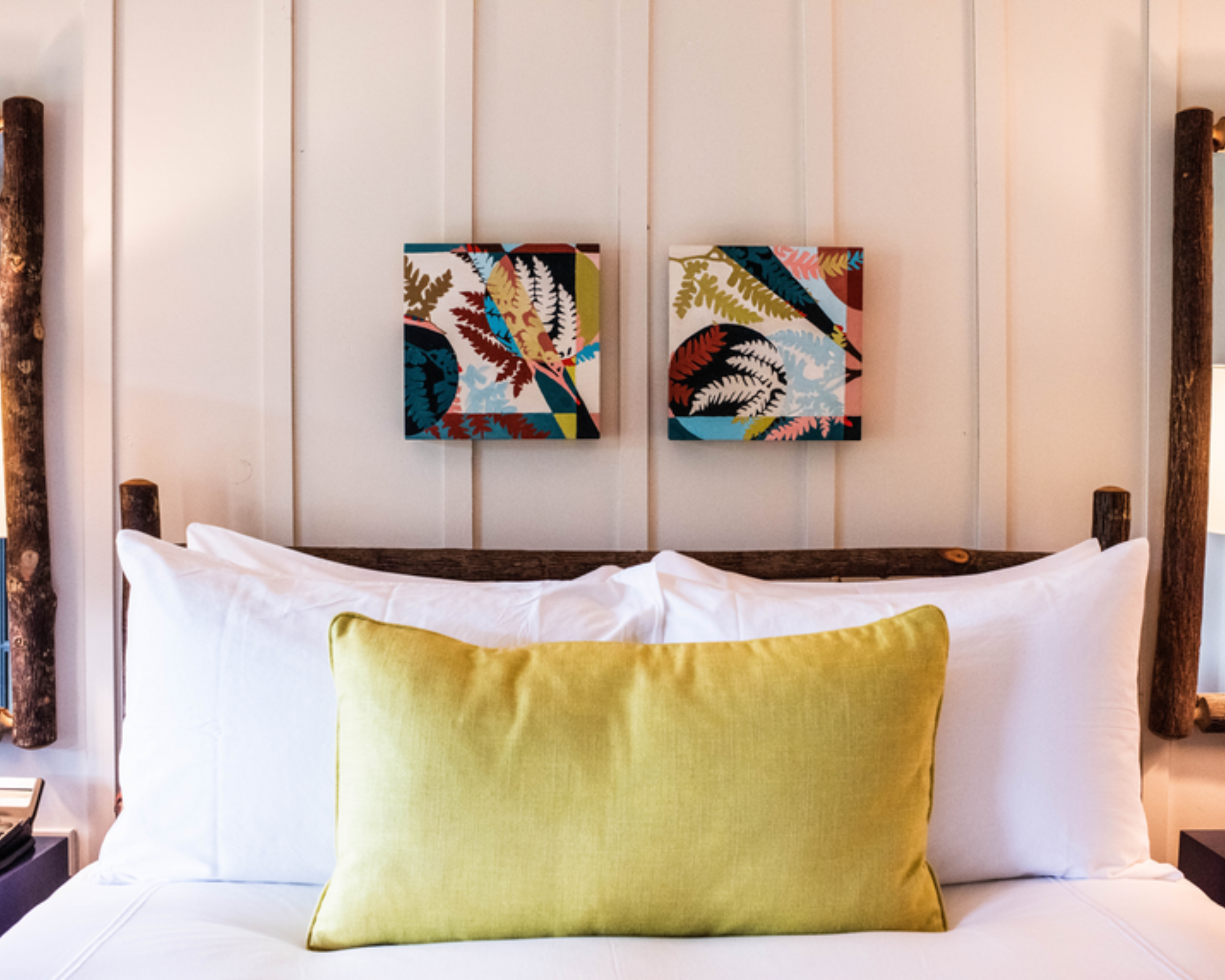Should You Always Frame Art? These Are the Golden Rules Gallery Curators and Interior Designers Swear By
Should you always frame art or will a no-frame look allow a piece to shine brighter? We called on gallerists and designers


The art world is a beautiful one, with endless intrigue and that is ever-evolving. And wondering whether you should always frame art is a very valid question.
With so many frames, mat styles, and color combinations to choose from, making this decision can quickly go from fun to too much pressure. And sometimes picking a frame can become more time-consuming (or expensive) than the piece itself...
But art collector or not, you will know the joy that a well-curated gallery wall can bring to a home. To help with the overwhelm of deciding whether or not to frame your artwork, I asked for the opinions of experts in the art world, as well as thoughts from those with an equally discerning eye for design.
Should you always frame art?

The overriding answer here is no, you do not necessarily always have to frame art at home. 'Both framed and unframed artwork have their unique appeal when showcasing different pieces,' says Varuna Kaur Kollanethu, the founder, director, and curator of Ruup & Form, a London gallery specializing in contemporary art, design, and craft.
Whether you choose to frame pieces or not depends on several factors, and there is much more to how to choose a picture frame than you might realize. So if you're wondering whether a watercolor painting needs that bamboo frame or not, here are some questions to ask yourself when making up your mind.
What is the art piece?

Naturally, when deciding whether to frame your living room wall art or not, it depends on the piece itself. Are you working with a small illustration or an antique (and inherited) oil painting? This will dictate what it needs (or does not need) from a visual standpoint and in terms of protection.
Kristin Coleman who co-owns Available Items - a design shop and gallery in the Hudson Valley – along with partner Chad shares their approach to framing. 'In our view, framing really depends on the type of art. Some paintings are strong enough or large enough to stand on their own but smaller pieces (particularly paper collages and illustrations) can benefit from being framed. It brings a certain elevation and attention to the work.'
The Livingetc newsletters are your inside source for what’s shaping interiors now - and what’s next. Discover trend forecasts, smart style ideas, and curated shopping inspiration that brings design to life. Subscribe today and stay ahead of the curve.
For some pieces, you might still 'frame' it but skip the glass. This is often the case with oil paintings where the brushstrokes add to the experience of the piece, for example. 'Framing art isn't always necessary, but it often enhances its presentation and protection,' says art expert Glen Hardwick-Bruce who has led Christie's Education for over a decade. 'If the artwork is painted on canvas, stretching it over a wooden frame can give it a finished look without the need for traditional framing.' Mounting pieces onto a rigid back can also give art a 'finished' look and the stability it needs – without a frame. 'This is often used for posters or prints,' he adds.
Float mounting is another popular way of displaying art, without a regular frame. 'Here, the artwork is mounted onto a backing board in a way that allows a small gap to appear between the artwork and the backing, giving it a floating effect.'
Where will the art live?

Having an idea of where you would like individual pieces to live is also important as this is telling of sun exposure, surrounding colorways, and architectural detail – all of which can impact whether you frame a piece or not, and how.
Leslie Dapper is the lead designer at Rumor Designs in Steamboat Springs, Colorado. Like many designers, Leslie is fond of a frame, when it is needed: 'I think art feels more important with a nice frame,' says Leslie. 'I rely on a good frame shop for help with custom framing.' There are different types of glass to frame art with, and a watercolor painting that you would like to keep in a south-facing room may have different requirements from an oil painting in a shady room, for example.
'Choosing the right mat and frame can be overwhelming, and professionals always have great ideas. While museum glass is more expensive, it will protect your art from sun damage so it's worth the splurge. For example, a watercolor on paper needs some sort of frame for support and glass to help protect it.'
What is the decorative context?
We've only scratched the surface of integrating art into your interiors scheme here. Like well-thought-out living room wall decor, art can bring a room's look to fruition.
'Unframed artwork are approachable, have a minimalist feel and open up spaces in an organic way,' continues Varuna. Consider whether a frame will add to the visual story you are telling with your interiors. Or, will a lack of frame allow the work to shine brighter and elevate your space?
Sonya Sparks highlights when a frame is unlikely to be required for added impact: 'For pieces that are canvas wrapped over a frame, they can usually stand on their own,' says the gallery owner. 'Artists often paint the edges of canvas black, or extend their paint or medium over the edges, so there is no need to have a frame if the edges are finished. Having a frame or not is purely subjective.'
What will maintain the integrity of the art the most?
Frames can make a piece of art sing, but styling should always respect the integrity of the artist's work and vision. 'While it is crucial to consider the protection and preservation of the artwork, we must take in context its visual impact, purpose, and the intention of the artist,' continues Varuna.
Custom framing art is a creative and skilled process in itself and one worth the investment, especially for particularly valuable pieces – both sentimentally and monetary – that do need framing. A good framer will consider all the finer details, including location and the ambiance you are trying to achieve.
'Frames can be very expensive, so if you purchase a piece of artwork and the edges are unfinished, I recommend asking the artist or the gallery to request that the artist finish the edges in lieu of a frame,' continues Sonya. 'On the other hand, frames can elevate the piece, like a piece of jewelry adds to an outfit. It is not needed, but can make a great statement.'
What will the rest of the display look like?

Some designers favor a combination of styles to keep a space on its toes: 'We are huge fans of diversifying your art collection,' says Christine Carney, Director of Design at Blackberry Farm Design. 'Having some pieces unframed, or even incorporating pieces that are unframeable, makes things more interesting to the eye and adds distinctiveness and personality to a collection.' Working with negative space in interior design, and weaving objects in different shapes and heights can work in some interior design schemes too.
'If the piece is wrapped on a canvas frame, it can hang alone without a frame,' continues Leslie. 'Propping small art on a shelf with other items can be interesting. You can use a small easel or even a large easel for bigger art if you have the room in your home.'
As the experts have said, to frame or not to frame is a very subjective decision that might change over time as a piece ages or gains value. 'As a gallery we believe the decision to frame artwork depends ultimately on the collector, the artwork's value, its condition and fragility,' adds Varuna. From a stylistic point of view, the Livingetc experts are comfortable with the idea of not framing a piece of art — however, if you want to keep the work pristine, framing may be the smarter decision.
If you are unsure, seek the opinion of the artist or maker, or of a gallery that works with pieces of a similar style, era, and value for their recommendations.

Camille is a freelance interiors writer and the former deputy editor of Real Homes where she covered a broad range of topics, including DIY, small space design, and gardens. She studied English language and Italian at the University of Manchester and it was during her year abroad studying in Bologna that she started documenting her adventures and observations in a blog. Camille has a passion for art and beautiful spaces. When not writing or refreshing her home, you will find her gallery hopping, taking photos, painting, and traveling to seek out interiors inspiration.


